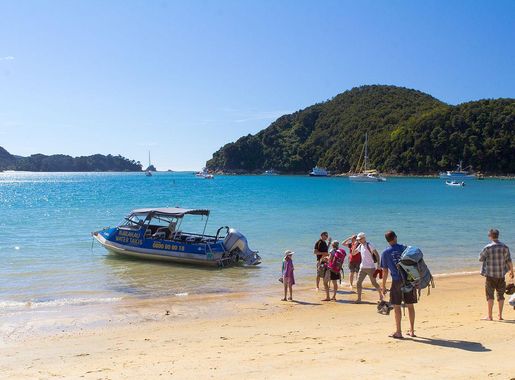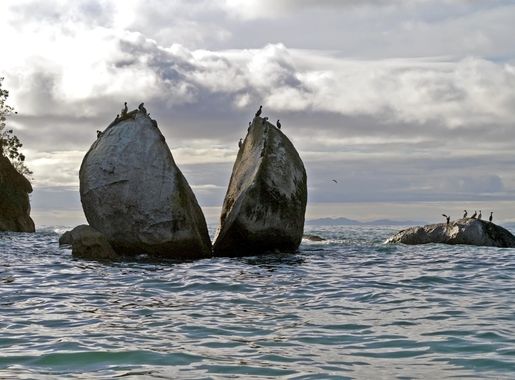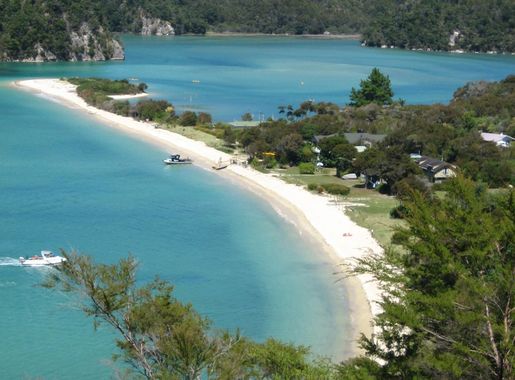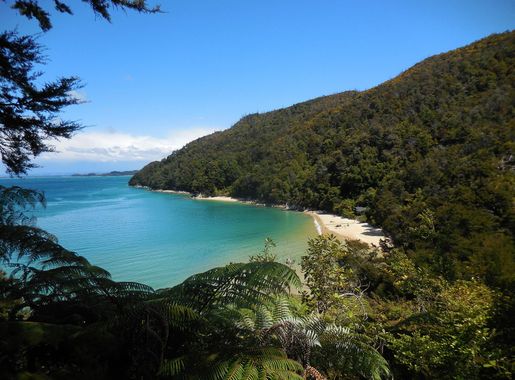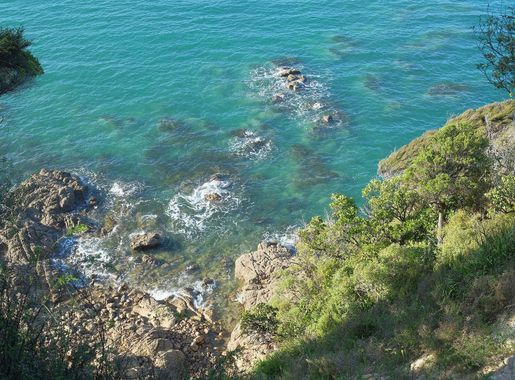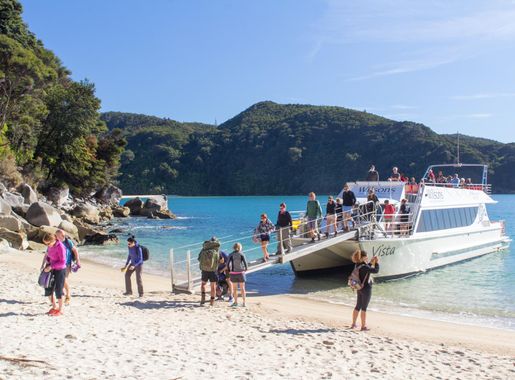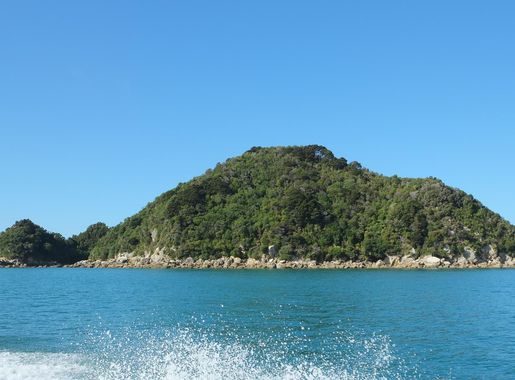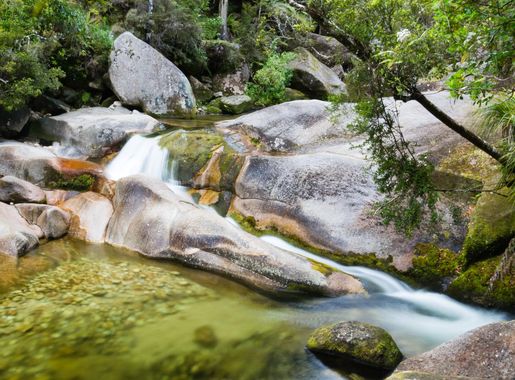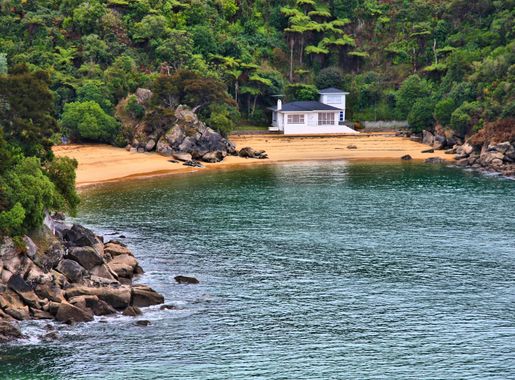
Abel Tasman National Park: Jewel of New Zealand's Coastline
Abel Tasman National Park: Discover New Zealand's coastal gem with golden beaches, clear waters, and lush forests—perfect for hiking, kayaking, and wildlife spotting.
Abel Tasman National Park is a stunning coastal paradise located at the northern tip of New Zealand's South Island. Known for its golden sandy beaches, turquoise waters, and lush native forests, this national park offers a unique blend of relaxation and adventure for visitors. The park is named after the Dutch explorer Abel Tasman, who was the first European to sight New Zealand in 1642. Its mild climate makes it an ideal destination year-round. Whether you're keen on hiking, kayaking, or simply soaking up the sun on one of its many pristine beaches, Abel Tasman National Park has something for everyone. One of the most popular activities in the park is the Abel Tasman Coastal Track, a 60-kilometer trail that winds its way through beautiful coastal landscapes. The track can be walked in its entirety over three to five days, or visitors can choose to explore shorter sections. Along the way, you'll find charming bays, tidal estuaries, and native wildlife. For those who prefer water-based activities, sea kayaking is a fantastic way to explore the park's coastline. Paddle past dramatic cliffs, through clear blue waters, and along the edge of lush forests. You might even spot seals, dolphins, and penguins during your adventure. Camping is another popular way to experience the park. There are numerous campsites and huts along the Coastal Track, providing a perfect opportunity to disconnect from the hustle and bustle of everyday life and immerse yourself in nature. If camping isn't your style, there are also a variety of lodges and accommodations nearby. With its breathtaking scenery and diverse range of activities, Abel Tasman National Park is a must-visit destination for anyone traveling to New Zealand.
Local tips in Abel Tasman National Park
- Book your accommodation and campsites in advance, especially during peak season.
- Check tide times before starting your hike, as some parts of the Coastal Track are tidal.
- Bring insect repellent to ward off sandflies, especially during the warmer months.
- Consider taking a water taxi to access different parts of the park quickly.
- Carry plenty of water, as fresh water sources are limited along the Coastal Track.
Abel Tasman National Park: Jewel of New Zealand's Coastline
Abel Tasman National Park is a stunning coastal paradise located at the northern tip of New Zealand's South Island. Known for its golden sandy beaches, turquoise waters, and lush native forests, this national park offers a unique blend of relaxation and adventure for visitors. The park is named after the Dutch explorer Abel Tasman, who was the first European to sight New Zealand in 1642. Its mild climate makes it an ideal destination year-round. Whether you're keen on hiking, kayaking, or simply soaking up the sun on one of its many pristine beaches, Abel Tasman National Park has something for everyone. One of the most popular activities in the park is the Abel Tasman Coastal Track, a 60-kilometer trail that winds its way through beautiful coastal landscapes. The track can be walked in its entirety over three to five days, or visitors can choose to explore shorter sections. Along the way, you'll find charming bays, tidal estuaries, and native wildlife. For those who prefer water-based activities, sea kayaking is a fantastic way to explore the park's coastline. Paddle past dramatic cliffs, through clear blue waters, and along the edge of lush forests. You might even spot seals, dolphins, and penguins during your adventure. Camping is another popular way to experience the park. There are numerous campsites and huts along the Coastal Track, providing a perfect opportunity to disconnect from the hustle and bustle of everyday life and immerse yourself in nature. If camping isn't your style, there are also a variety of lodges and accommodations nearby. With its breathtaking scenery and diverse range of activities, Abel Tasman National Park is a must-visit destination for anyone traveling to New Zealand.
When is the best time to go to Abel Tasman National Park?
Iconic landmarks you can’t miss
Split Apple Rock
Experience the breathtaking Split Apple Rock in Abel Tasman National Park, a natural wonder perfect for kayaking, hiking, and unforgettable views.
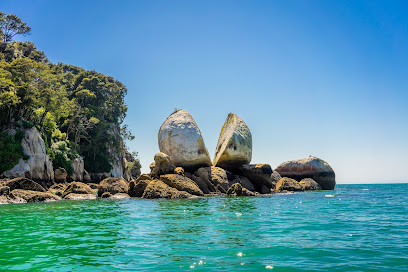
Kahurangi National Park
Explore the breathtaking landscapes and diverse ecosystems of Kahurangi National Park, a must-visit destination for nature lovers in New Zealand.
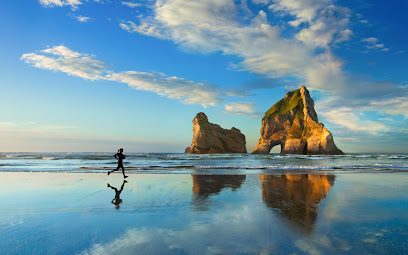
Wilsons Abel Tasman
Discover the breathtaking landscapes and vibrant wildlife of Abel Tasman National Park with Wilsons Abel Tasman, your ultimate adventure guide.
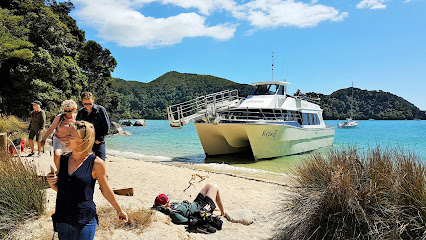
Abel Tasman Sea Shuttles
Experience stunning coastal views and explore the beauty of Abel Tasman National Park with Abel Tasman Sea Shuttles, your gateway to adventure.
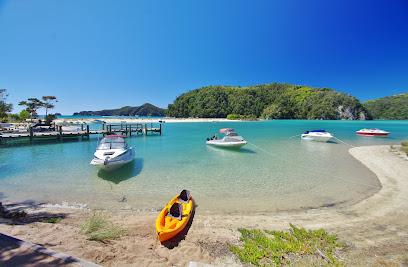
Wainui Falls
Discover the beauty of Wainui Falls in Abel Tasman National Park, a serene escape into nature's wonders and a perfect spot for relaxation and exploration.
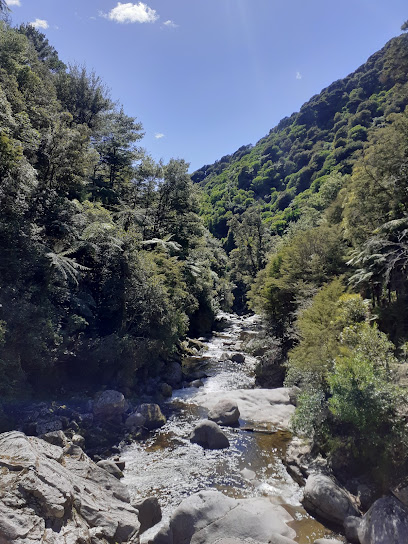
Wilsons Abel Tasman National Park
Explore Wilsons Abel Tasman National Park: A breathtaking coastal paradise in New Zealand, perfect for hiking, kayaking, and enjoying nature's beauty.

Harwoods Hole
Explore the breathtaking Harwoods Hole in Tasman, New Zealand - a hiker's paradise with stunning landscapes and unique geological wonders.
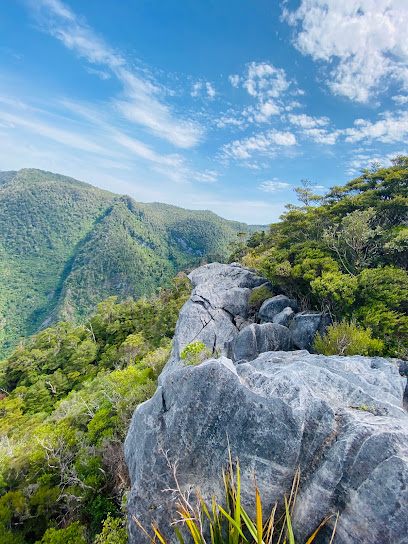
Anchorage Hut
Experience nature's beauty at Anchorage Hut in Abel Tasman National Park, a tranquil escape perfect for hiking and relaxation.

Cleopatra's Pool
Experience the thrill of sliding into crystal-clear waters at Cleopatra's Pool in Abel Tasman National Park, a natural wonder waiting for your visit.
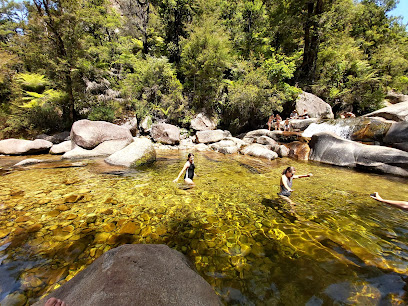
Abel Tasman Tourism Information
Explore the stunning Abel Tasman National Park with expert guidance from Abel Tasman Tourism Information in Mārahau, your gateway to adventure.

Medlands Beach
Explore Medlands Beach, a serene paradise in Abel Tasman National Park with golden sands, crystal-clear waters, and breathtaking coastal views.

Awaroa Hut
Experience the serenity of Awaroa Hut in Abel Tasman National Park, where nature and comfort meet for an unforgettable outdoor escape.

Bark Bay Hut
Discover the tranquility and natural beauty of Bark Bay Hut in Abel Tasman National Park, a perfect getaway for nature lovers and adventure seekers.

Falls River Swing Bridge
Experience the thrill of adventure at the Falls River Swing Bridge, a breathtaking highlight of Abel Tasman National Park's scenic trails.
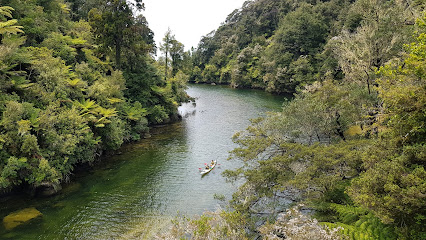
Abel Tasman Coast Track
Explore the stunning Abel Tasman Coast Track, where breathtaking coastal views and lush nature await every adventurer.
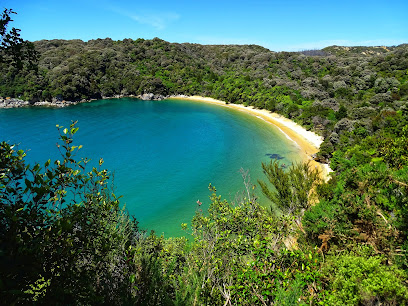
Unmissable attractions to see
Te Waikoropupu Springs
Explore the crystal-clear waters and serene beauty of Te Waikoropupu Springs, one of New Zealand's most captivating natural attractions.
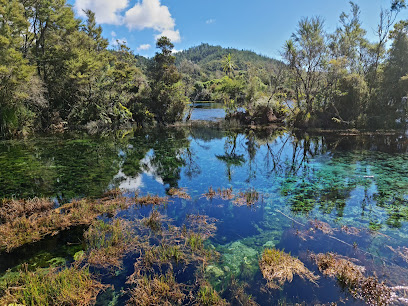
Riuwaka Resurgence
Experience the serene beauty of Riuwaka Resurgence, a natural wonder in New Zealand, where crystal-clear waters meet lush landscapes, perfect for relaxation and exploration.
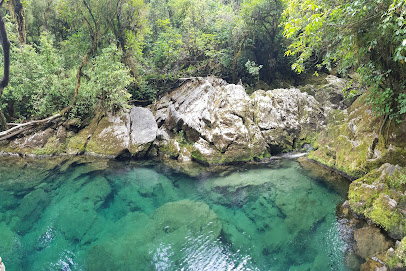
Ngarua Caves
Explore the stunning limestone formations and captivating history of Ngarua Caves, a must-visit natural wonder in New Zealand's picturesque Motueka region.
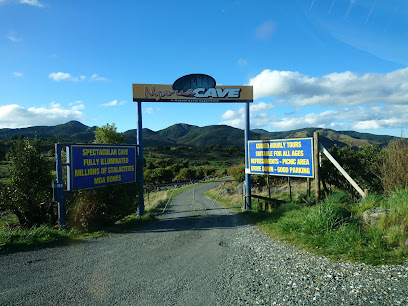
Kahurangi National Park
Discover the breathtaking beauty and rich biodiversity of Kahurangi National Park, New Zealand's natural paradise for adventure and tranquility.
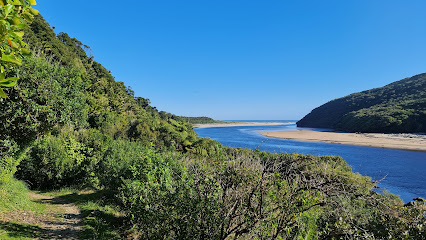
Janie Seddon Shipwreck
Explore the mysterious Janie Seddon Shipwreck in Motueka, a historical landmark that offers a unique glimpse into New Zealand's maritime past.
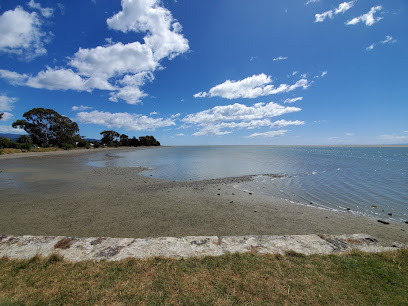
Labyrinth Rocks
Discover the enchanting Labyrinth Rocks in Tākaka, New Zealand - a unique natural wonder with intricate formations and breathtaking views.

Wilsons Abel Tasman
Experience the stunning landscapes and adventure opportunities at Wilsons Abel Tasman, the gateway to Abel Tasman National Park.
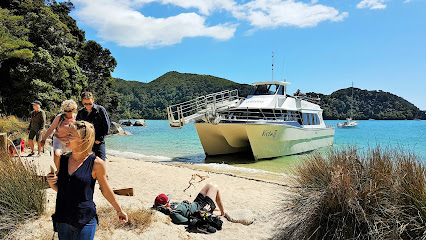
Abel Tasman Sea Shuttles
Discover the breathtaking beauty of Abel Tasman National Park with Abel Tasman Sea Shuttles, your gateway to stunning beaches and coastal adventures.

The Grove Scenic Reserve
Explore The Grove Scenic Reserve, a stunning natural attraction in New Zealand, featuring unique rock formations and diverse ecosystems for an unforgettable outdoor adventure.
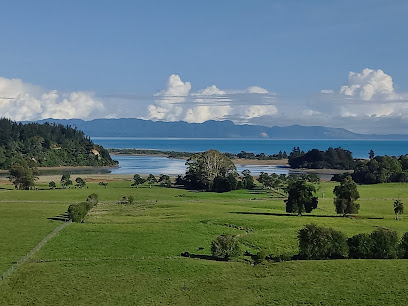
Rawhiti Cave
Discover the breathtaking beauty and adventure of Rawhiti Cave, a stunning hiking destination in Motupipi, New Zealand.

Golden Bay Visitor Centre
Discover the heart of Golden Bay at the Visitor Centre, your gateway to adventure, culture, and stunning landscapes.
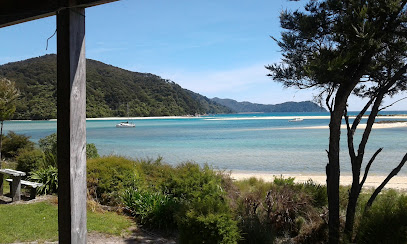
Kaiteriteri Mountain Bike Park
Discover adventure at Kaiteriteri Mountain Bike Park, where stunning trails and breathtaking views await every biking enthusiast in New Zealand.

Hawkes Lookout Parking
Discover unparalleled views of Riwaka Valley and Tasman Bay at Hawkes Lookout Parking, a must-see scenic spot in Takaka Hill.

Wilsons Abel Tasman National Park
Experience the breathtaking landscapes and outdoor adventures at Wilsons Abel Tasman National Park, New Zealand's coastal paradise for nature lovers.
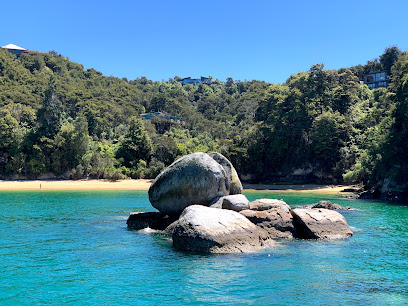
Pupu Hydro Walkway Trailhead
Experience the stunning Pupu Hydro Walkway Trailhead in New Zealand's Kahurangi National Park, where nature meets history in breathtaking landscapes.
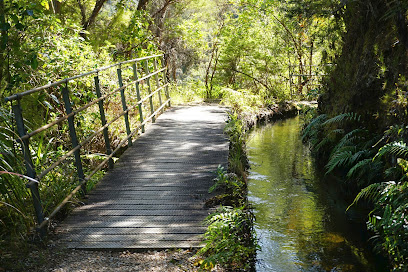
Essential places to dine
The Smoking Barrel
Experience mouthwatering meals and delicious donuts at The Smoking Barrel in Motueka – A must-visit culinary gem for every traveler.

Smugglers Pub & Cafe
Experience the nautical charm at Smugglers Pub & Cafe in Tāhunanui - where hearty European cuisine meets stunning coastal views.

The Styx
Discover fresh local seafood at The Styx in Nelson - where exquisite dining meets stunning waterfront views.

The Boat Shed Cafe
Experience exquisite dining at The Boat Shed Cafe with breathtaking views of Abel Tasman National Park in Nelson.

Urban Oyster Bar & Eatery
Experience the best of coastal cuisine at Urban Oyster Bar & Eatery – where fresh oysters meet vibrant flavors in a lively atmosphere.

NYSA | Turkish Restaurant | Nysa Nelson
Discover the authentic flavors of Turkey at NYSA Turkish Restaurant in Nelson – where every meal is a celebration of taste.

The Park Cafe Marahau
Discover delightful dining at The Park Cafe Marahau – your gateway to delicious food and live music near Abel Tasman National Park.

Jester House Café
Discover Jester House Café: A perfect blend of delicious cuisine and serene surroundings in the heart of Tasman.

The Barn Cabins & Camp
Experience nature at its finest at The Barn Cabins & Camp near Abel Tasman National Park - your perfect outdoor getaway.

Hooked on Marahau
Experience fresh flavors and stunning views at Hooked on Marahau, your go-to spot for delightful meals near Abel Tasman National Park.

Wilsons Abel Tasman
Explore stunning coastlines and lush forests at Wilsons Abel Tasman – an unforgettable adventure in New Zealand's breathtaking national park.
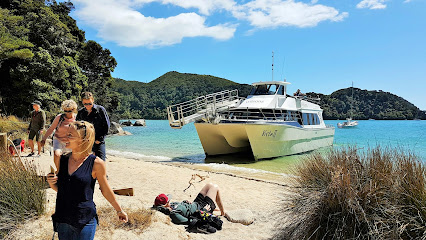
Mrs Smiths Cafe & Vegetables
Experience the flavors of Riwaka at Mrs Smith's Cafe & Vegetables - where local ingredients meet friendly service in a cozy setting.

Simply Indian
Experience authentic Indian flavors at Simply Indian in Motueka – a culinary delight amidst stunning New Zealand landscapes.

Awaroa Lodge
Experience luxury in nature at Awaroa Lodge - your gateway to adventure in Abel Tasman National Park.

Totos Café & Pizzeria
Discover Totos Café & Pizzeria in Tata Beach: where delicious pizzas meet local art in a cozy atmosphere perfect for relaxation.

Markets, malls and hidden boutiques
Pohara General Store
Discover Pohara General Store: a charming hub for fast food, local goods, and essential supplies in the stunning Abel Tasman region.

Kaiteriteri Store - On The Spot
Visit Kaiteriteri Store - On The Spot for all your beach essentials and enjoy a delightful shopping experience in the heart of Kaiteriteri.

The Crystal Shop
Discover a world of crystals, incense, and unique gifts at The Crystal Shop in Motueka, where spirituality meets shopping.

Tessa Mae's
Discover unique local treasures at Tessa Mae's gift shop in Tāhunanui, Nelson, perfect for souvenirs and local crafts.
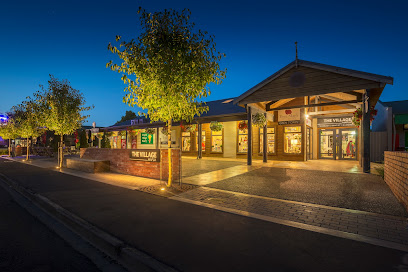
Abel Tasman Centre
Explore Abel Tasman National Park with essential resources at the Abel Tasman Centre, your trusted tourist information hub in Mārahau.
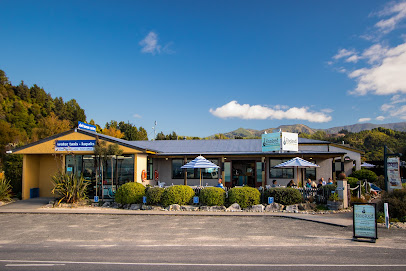
Wildflower
Experience Tākaka's unique fashion at Wildflower, where local artistry meets stylish clothing in a charming boutique setting.

Mariposa Clothing Takaka
Explore the stylish offerings at Mariposa Clothing in Takaka, where unique fashion meets local charm in a delightful shopping experience.

Kullawa
Explore Kullawa, the boutique where local fashion meets unique style in the heart of Motueka, New Zealand.

Astrolabe Fashions
Discover unique fashion and local craftsmanship at Astrolabe Fashions in Motueka, your go-to spot for stylish apparel and souvenirs.

Hospice Shop Motueka
Explore a treasure trove of second-hand gems at Hospice Shop Motueka, where every purchase supports local hospice care.

Living Light Candles Factory Outlet
Explore beautifully crafted candles at Living Light Candles Factory Outlet, Tākaka's charming destination for eco-friendly home decor.

Stitchcraft and Tanya Carney Designs
Discover the art of sewing at Stitchcraft and Tanya Carney Designs, where vibrant fabrics and expert tailoring await in the scenic Riwaka Valley.

Dollarama - A Variety Store - Motueka
Explore Dollarama in Motueka for affordable variety shopping—your one-stop destination for essentials and unique souvenirs!

Amika
Explore unique fashion and accessories at Amika in Tākaka, where local artistry meets sustainable style.

El Gecko
Explore El Gecko in Tākaka for unique local crafts and the perfect Kiwi souvenirs in a welcoming atmosphere.

Essential bars & hidden hideouts
The Free House Pub
Experience the warmth of New Zealand hospitality at The Free House Pub, featuring local craft beers and delicious pub fare in a cozy atmosphere.

Mussel Inn
Experience the best of New Zealand seafood and local brews at Mussel Inn, a cozy bar in Onekaka famous for its fresh mussels and welcoming atmosphere.

Moutere Inn
Experience the rich history and local flavors of Upper Moutere at Moutere Inn, a beloved pub and restaurant in New Zealand.
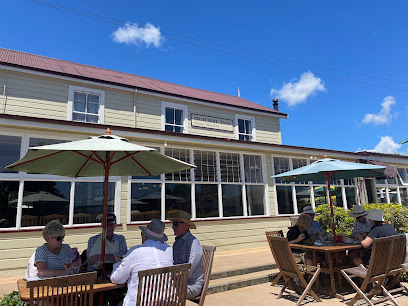
Roots Bar
Experience Tākaka's vibrant nightlife at Roots Bar, where delicious food meets live music in a welcoming atmosphere.

The Stables Tavern & Restaurant
Experience the vibrant atmosphere and local flavors at The Stables Tavern & Restaurant in Richmond, a culinary haven for food lovers and travelers alike.
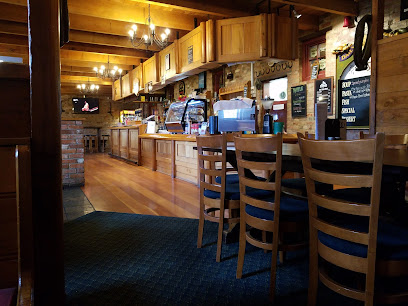
Totos Café & Pizzeria
Experience the perfect blend of delicious pizzas, artisanal coffee, and local art at Totos Café & Pizzeria in Tata Beach.
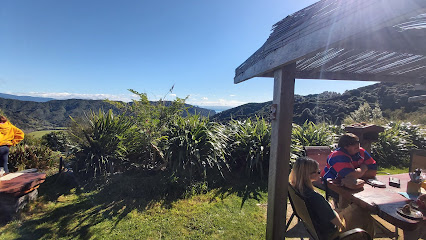
Ratanui Lodge
Discover the tranquil beauty of Ratanui Lodge, where comfort meets nature in the heart of Pōhara, New Zealand.
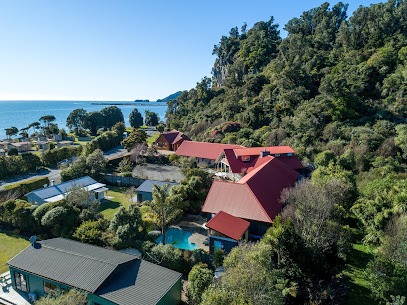
Riwaka Hotel
Experience local flavors and craft brews at Riwaka Hotel, a charming bar and restaurant nestled in the scenic beauty of New Zealand's Riwaka region.

River Inn
Experience the perfect blend of comfort and community at River Inn, your gateway to the stunning landscapes of Tākaka, New Zealand.

Waterfront
Experience exquisite dining with breathtaking views at the Waterfront Restaurant in Kaiteriteri, where local flavors meet stunning coastal scenery.
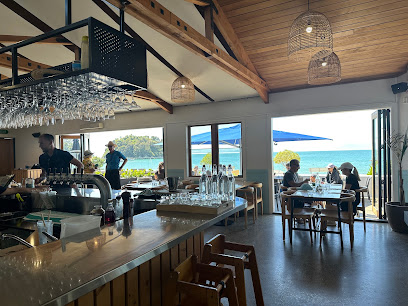
The Fat Tui
Savor gourmet hamburgers in the beautiful coastal town of Mārahau, New Zealand, where local flavors meet stunning scenery.

Beached Whale Restaurant & Bar
Experience the best of Motueka at Beached Whale Restaurant & Bar, offering delightful cuisine and stunning coastal views.
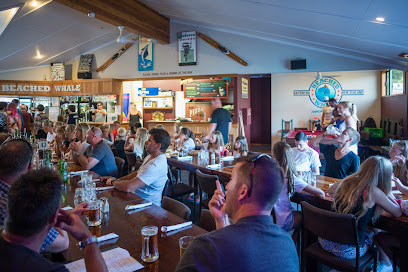
Molly B’s
Discover the vibrant atmosphere and breathtaking views at Molly B’s, your perfect coastal bar getaway in Pōhara.

Nikau Cafe & Bar
Discover the flavors of Pōhara at Nikau Cafe & Bar, where local charm meets delicious cuisine in a stunning coastal setting.

Al Forno Pizza
Discover the authentic taste of New Zealand at Al Forno Pizza, where every slice is a celebration of fresh ingredients and heartfelt cooking.

Local Phrases about Abel Tasman National Park
-
- HelloKia ora
[Kee-ah oh-rah] - GoodbyeHaere rā
[High-ree rah] - YesĀe
[Eye] - NoKāo
[Kah-oh] - Please/You're welcomeTēnā koe
[Tay-nah koh-eh] - Thank youNgā mihi
[Nah mee-hee] - Excuse me/SorryWhakamaumahara
[Fah-kah-mow-mah-hah-rah] - How are you?Kei te pēhea koe?
[Kay teh pay-hea koh-eh?] - Fine. And you?Māmā. Ā, koe?
[Mah-mah. Eye, koh-eh?] - Do you speak English?Kōrero koe i te reo Pākehā?
[Koh-reh-roh koh-eh ee teh reh-oh pah-keh-hah?] - I don't understandKaore au e mārama
[Kah-oh-reh oh eh mah-rah-mah]
- HelloKia ora
-
- I'd like to see the menu, pleaseMe tiro i te menewa, tēnā
[Meh tee-roh ee teh meh-neh-wah, tay-nah] - I don't eat meatKaore au e kai konihi
[Kah-oh-reh oh eh kai koh-nee-hee] - Cheers!Ārahi!
[Eye-rah-hee] - I would like to pay, pleaseMe utu au, tēnā
[Meh oo-too oh, tay-nah]
- I'd like to see the menu, pleaseMe tiro i te menewa, tēnā
-
- Help!Āwhina!
[Eye-fee-nah] - Go away!Haere atu!
[High-ree ah-too] - Call the Police!Karanga i te Pirihimana!
[Kah-rah-ngah ee teh Pee-ree-hee-mah-nah!] - Call a doctor!Karanga i te Rata!
[Kah-rah-ngah ee teh Rah-tah!] - I'm lostI wareware ahau
[Ee wah-reh-wah-reh ah-how] - I'm illE mate ahau
[Ee mah-teh ah-how]
- Help!Āwhina!
-
- I'd like to buy...Me hoko...
[Meh hoh-koh...] - I'm just lookingKa kite ahau
[Kah kee-teh ah-how] - How much is it?He aha te utu?
[Heh ah-hah teh oo-too?] - That's too expensiveHe rawa te utu
[Heh rah-wah teh oo-too] - Can you lower the price?Ka taea e koe te whakaiti i te utu?
[Kah teh-ah eh koh-eh teh fah-kai-tee ee teh oo-too?]
- I'd like to buy...Me hoko...
-
- What time is it?He aha te wā?
[Heh ah-hah teh wah?] - It's one o'clockKotahi te haora
[Koh-tah-hee teh how-rah] - Half past (10)I muri i te (tekau)
[Ee moo-ree ee teh (teh-kow)] - MorningAhiahi
[Ah-hee-ah-hee] - AfternoonAhiahi
[Ah-hee-ah-hee] - EveningPō
[Poh] - YesterdayInāianei
[Ee-nah-ee-ah-neh-eh] - TodayTēnei rā
[Tay-nay rah] - TomorrowĀpōpō
[Eye-poh-poh] - 1Tahi
[Tah-hee] - 2Rua
[Roo-ah] - 3Toru
[Toh-roo] - 4Whā
[Fah] - 5Rima
[Ree-mah] - 6Ono
[Oh-no] - 7Whitu
[Fee-too] - 8Waru
[Wah-roo] - 9Iwa
[Ee-wah] - 10Tekau
[Teh-kow]
- What time is it?He aha te wā?
-
- Where's a/the...?Kei hea te...?
[Kay heh-ah teh...?] - What's the address?He aha te wāhi?
[Heh ah-hah teh wah-hee?] - Can you show me (on the map)?Ka taea e koe te whakaatu i ahau (i te mahere)?
[Kah teh-ah eh koh-eh teh fah-kah-ah-too ee ah-how (ee teh mah-heh-reh)?] - When's the next (bus)?Kei hea te (waka) e whai ake ana?
[Kay heh-ah teh (wah-kah) eh fah-ee ah-keh ah-nah?] - A ticket (to ....)He tiki (ki ....)
[Heh tee-kee (kee ....)]
- Where's a/the...?Kei hea te...?
History of Abel Tasman National Park
-
In 1642, the Dutch explorer Abel Tasman became the first European to sight New Zealand. He anchored in what is now Golden Bay, initially naming it 'Murderers' Bay' after a violent encounter with the Māori. Despite the hostile reception, Tasman's journey marked the first European exploration of the region, and the park was later named in his honor.
-
Long before European contact, the region now known as Abel Tasman National Park was inhabited by various Māori tribes, including the Ngāti Tūmatakōkiri. The Māori utilized the area's rich natural resources for fishing, hunting, and gathering, and they established pā (fortified villages) along the coastline. Numerous archaeological sites, including middens, terraces, and pits, bear testimony to their long-standing presence.
-
In the 19th century, European settlers arrived in New Zealand, bringing significant changes to the region. The introduction of new flora and fauna, along with the establishment of farms and towns, disrupted the traditional Māori way of life. The Europeans exploited the region's natural resources, particularly timber and minerals, leading to deforestation and environmental changes.
-
Abel Tasman National Park was officially established on December 18, 1942, as part of New Zealand's efforts to preserve its natural heritage. The park spans 22,530 hectares and is renowned for its stunning coastal scenery, golden beaches, and lush native forests. The establishment of the park aimed to protect the area's unique ecological and cultural values while promoting tourism and outdoor recreation.
-
Conservation initiatives have been crucial in maintaining the ecological integrity of Abel Tasman National Park. Efforts include the reforestation of native tree species, control of invasive species, and protection of endangered wildlife. The park is home to diverse flora and fauna, including kiwi birds, tui, and various marine species. Ongoing conservation projects aim to sustain the park's biodiversity for future generations.
-
Since its establishment, Abel Tasman National Park has become a popular destination for tourists seeking adventure and natural beauty. The park offers a wide range of activities, including kayaking, hiking, and sailing. The Abel Tasman Coast Track, one of New Zealand's Great Walks, attracts thousands of visitors each year. Tourism development has been carefully managed to balance visitor enjoyment with environmental protection.
-
In recent years, there has been a resurgence of Māori culture and heritage within the park. Initiatives include the revitalization of traditional practices, such as waka (canoe) voyages and storytelling. Collaborative efforts between Māori iwi and the Department of Conservation ensure that cultural values are respected and preserved. The park serves as a living testament to the enduring connection between the Māori people and their ancestral land.
Abel Tasman National Park Essentials
-
Abel Tasman National Park is located at the northern tip of New Zealand's South Island. The nearest major city is Nelson, which has an airport with regular flights from major New Zealand cities like Auckland, Wellington, and Christchurch. From Nelson, you can drive to the park, which takes about 1.5 hours. Alternatively, you can take a bus or shuttle service. Another option is to take a ferry or water taxi from Kaiteriteri or Marahau, which are closer to the park's entrance.
-
Once in Abel Tasman National Park, transportation options include hiking, kayaking, and water taxis. The park is known for its coastal track, which can be walked in sections or in its entirety over several days. Water taxis and kayaking tours are popular ways to explore the coastline and reach more remote parts of the park. Car rentals are available in nearby towns, but vehicles are not allowed within the park itself.
-
The official currency in New Zealand is the New Zealand Dollar (NZD). Credit and debit cards are widely accepted in nearby towns, but it is advisable to carry some cash for smaller establishments or remote areas. ATMs are available in Nelson and other towns near the park. Some tours and accommodation options within the park may require pre-booking and pre-payment, so plan accordingly.
-
Abel Tasman National Park is generally very safe for tourists. However, as with any travel destination, it is wise to take standard precautions. Keep an eye on your belongings, especially in crowded areas. There are no specific high-crime areas targeting tourists within the park. Be mindful of natural hazards like changing tides, which can affect your plans if you're hiking along the coast.
-
In case of emergency, dial 111 for immediate assistance. Mobile phone coverage can be limited in some parts of the park, so it is advisable to carry a personal locator beacon (PLB) or satellite phone if you are going into remote areas. The nearest medical facilities are in Nelson. Ensure you have travel insurance that covers medical emergencies and outdoor activities like hiking and kayaking.
-
Fashion: Do wear comfortable, weather-appropriate clothing and sturdy footwear for hiking. Avoid wearing overly revealing clothing. Religion: There are no specific religious customs to observe within the park, but be respectful of any cultural sites you may encounter. Public Transport: Do use water taxis and shuttles to access different parts of the park. Don't litter and always follow Leave No Trace principles. Greetings: Do greet people with a friendly 'hello' or 'kia ora,' the Maori greeting. Eating & Drinking: Do carry sufficient food and water, especially if you're going on a long hike. Don't leave food scraps behind, as this can attract wildlife.
-
To experience Abel Tasman National Park like a local, consider visiting during the shoulder seasons (spring and autumn) when the park is less crowded. Take the time to explore the smaller, less-visited bays and beaches. Join a guided tour to learn about the local flora and fauna from an expert. If you're kayaking, start early in the morning when the water is typically calmer.
Trending Landmarks in Abel Tasman National Park
Nearby Cities to Abel Tasman National Park
-
Things To Do in Blenheim
-
Things To Do in Wellington
-
Things To Do in Kaikoura
-
Things To Do in Whanganui
-
Things To Do in New Plymouth
-
Things To Do in Masterton
-
Things To Do in Greymouth
-
Things To Do in Palmerston North
-
Things To Do in Christchurch
-
Things To Do in Taupo
-
Things To Do in Napier
-
Things To Do in Hamilton
-
Things To Do in Timaru
-
Things To Do in Rotorua
-
Things To Do in Tauranga

